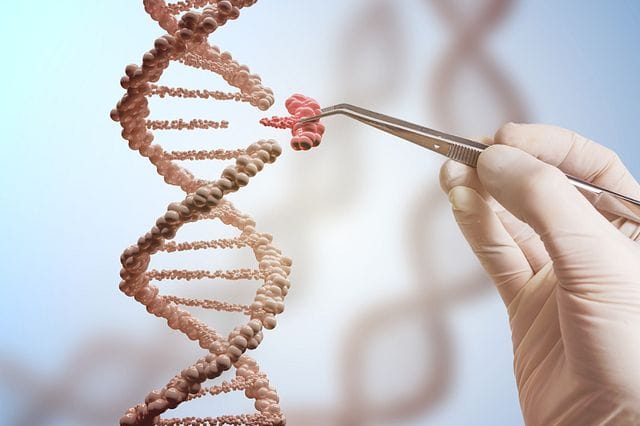Biology is the study of life, yet life itself often surpasses imagination. From the microscopic machinery within cells to the vast interconnectedness of ecosystems, biology reveals truths that are both astonishing and humbling. Every organism, every molecule, and every process tells a story of survival, adaptation, and wonder. The following fifty facts will challenge the way you perceive life, revealing that the world is far more extraordinary than it appears.
1. Your Body Hosts More Microbes Than Human Cells
Every person is a walking ecosystem. Microbes, including bacteria, viruses, and fungi, outnumber human cells by roughly 1.3 to 1. They influence digestion, immunity, even mood, showing that humans are not solitary entities but collaborative hosts to countless microscopic organisms.
2. The Human Brain Has More Connections Than Stars in the Milky Way
The brain contains around 86 billion neurons, each connecting to thousands of others, creating trillions of synapses. This immense network surpasses the number of stars in our galaxy, highlighting the vast computational power packed into a single organ.
3. DNA Is a Blueprint Longer Than You Can Imagine
If unraveled, the DNA in a single human cell would stretch about two meters. Multiplied by the trillions of cells in the body, your combined DNA could reach to the sun and back thousands of times. This tiny molecule encodes the story of life in sequences of four letters: A, T, C, and G.
4. You Share About 60% of Your DNA with Bananas
Genetics reveals our unexpected connections with the natural world. Roughly 60% of human DNA is similar to that of a banana, demonstrating the shared evolutionary history of all living organisms.
5. Your Heart Beats Over 3 Billion Times in a Lifetime
Pumping blood continuously, the human heart sustains life through an average of 100,000 beats per day. Over a typical lifespan, this amounts to more than three billion beats, a tireless engine operating with remarkable precision.
6. Some Animals Can Regenerate Entire Body Parts
Starfish can regrow entire arms, axolotls can regenerate limbs and even parts of their heart, and certain lizards can regrow tails. This ability, called regeneration, demonstrates biological resilience and cellular plasticity that humans can only dream of.
7. Octopuses Have Three Hearts
Two pump blood to the gills, while the third pumps it to the rest of the body. Even more intriguing, the heart that serves the body stops beating when the octopus swims, explaining why these creatures prefer crawling to conserve energy.
8. A Single Tree Can Communicate with Others
Through underground networks of fungi called mycorrhizae, trees exchange nutrients, send warning signals about pests, and even support weaker neighbors. This “wood-wide web” reveals forests as collaborative communities rather than mere collections of trees.
9. Your Stomach Gets a New Lining Every Few Days
The human stomach produces hydrochloric acid strong enough to dissolve metals, yet it avoids self-digestion by regenerating its protective lining every three to four days, a remarkable feat of cellular renewal.
10. Some Cells Can Live for Decades
While many cells are constantly replaced, certain neurons in the human brain can last a lifetime. These cells preserve memory, learning, and consciousness, enduring in the same body for over eighty years.
11. Humans Are Bioluminescent, But You Can’t See It
Like fireflies and deep-sea creatures, humans emit faint light due to biochemical reactions in cells. It’s invisible to the naked eye, but sensitive cameras can detect it, a hidden glow that hints at the energy flowing within.
12. Your Bones Are Stronger Than Steel
Pound for pound, human bones are stronger than concrete and can withstand incredible pressure. Yet they remain lightweight, flexible, and capable of healing themselves, balancing strength and resilience elegantly.
13. Some Animals Don’t Age the Way We Do
Turtles, certain fish, and lobsters exhibit negligible senescence, showing minimal signs of aging. Some lobsters even grow stronger with age, challenging assumptions about the inevitability of decline.
14. Your Gut Is a Second Brain
The enteric nervous system contains hundreds of millions of neurons, capable of autonomous function. This “second brain” regulates digestion and communicates with the central brain, influencing emotions and even decision-making.
15. Life Exists in Extreme Conditions
From acidic lakes to hydrothermal vents in the deep ocean, extremophiles survive where no human could. These organisms expand our understanding of life’s boundaries and hint at possibilities for extraterrestrial life.
16. Your Body Contains Gold
Though minuscule, the human body contains trace amounts of gold, mostly in the blood. Tiny amounts, yet symbolic of the precious complexity embedded in every living system.
17. Trees Can Live for Thousands of Years
The bristlecone pine can survive for over 5,000 years. These ancient beings witness millennia of change, embodying resilience, adaptability, and the slow but unstoppable passage of life.
18. Some Frogs Freeze Solid to Survive Winter
Wood frogs can survive being frozen solid, halting their metabolism almost completely. When temperatures rise, they thaw and resume normal function, a biological pause button that defies expectations.
19. Your Nose Can Detect Trillions of Scents
Recent research suggests humans can distinguish up to one trillion odors, far beyond the commonly cited 10,000. The olfactory system is an underappreciated gateway to memory, emotion, and survival.
20. Your Liver Can Regrow
Even if up to 75% of the liver is removed, it can regenerate to full size. This unique organ demonstrates regenerative capacity unparalleled in most of the body.
21. Some Insects Can Survive in Space
Tardigrades, or water bears, can endure the vacuum, radiation, and extreme temperatures of space. Their cellular structures resist damage, earning them the title of the most resilient life forms on Earth.
22. Your Skin Is the Largest Organ
Covering roughly 2 square meters, the skin protects, senses, and regulates temperature. Its layers continually renew themselves, providing both a barrier and a sensory interface with the world.
23. Some Fish Can Walk on Land
Mudskippers use their fins to traverse mudflats, blending aquatic and terrestrial locomotion. Evolution blurs boundaries, revealing surprising adaptations in unexpected species.
24. Your Body Produces New Blood Cells Constantly
The bone marrow generates millions of red blood cells per second, replenishing oxygen transport systems, demonstrating the ceaseless rhythm of life within.
25. Bioluminescent Organisms Use Light to Survive
Fireflies, deep-sea fish, and certain fungi use light to attract mates, lure prey, or evade predators. In darkness, light becomes a tool, a language, and a survival strategy.
26. Some Plants Eat Animals
Carnivorous plants like the Venus flytrap, pitcher plants, and sundews trap and digest insects to supplement nutrient-poor soils. Life adapts in astonishing ways when resources are scarce.
27. Your Eyes Can Detect Millions of Colors
The human eye contains three types of cone cells, allowing perception of millions of hues. Colors influence mood, memory, and perception, connecting our biology to the aesthetics of life.
28. Certain Animals Use Electricity
Electric eels generate shocks exceeding 600 volts, using electricity to hunt, defend, and communicate. Nature harnesses forces humans usually manipulate only through technology.
29. Your Bones Are Constantly Remodeling
Even as they support weight and protect organs, bones are in constant flux. Osteoblasts build, osteoclasts break down, and the skeleton reshapes in response to stress, diet, and activity.
30. Some Birds Navigate Using Magnetic Fields
Pigeons, sea turtles, and migratory birds sense Earth’s magnetic field to travel thousands of miles accurately, a navigational sense humans can barely imagine.
31. Cells Can “Commit Suicide” to Protect the Organism
Apoptosis is programmed cell death. When cells are damaged or infected, they self-destruct to protect surrounding tissue, a biological form of sacrifice for the greater good.
32. Your Body Is Mostly Water
Approximately 60% of the human body is water. This universal solvent allows chemical reactions, nutrient transport, and temperature regulation, sustaining life in every cell.
33. Some Fish Can See Ultraviolet Light
Mantis shrimp and certain other species perceive wavelengths invisible to humans. Their vision reveals hidden patterns in nature, like ultraviolet markings on flowers and prey.
34. Your Heart Can Generate Its Own Electrical Impulses
Pacemaker cells in the heart autonomously initiate contractions, maintaining rhythm even outside the brain’s direct control, a testament to intrinsic biological intelligence.
35. Microbes Can Communicate
Bacteria release chemical signals to coordinate activity in a process called quorum sensing, forming organized colonies and exhibiting behaviors that resemble collective intelligence.
36. Some Animals Can Survive Decades Without Food
Certain species of turtles and sharks slow metabolism drastically, living months or years on minimal intake, a strategy of survival that defies human experience.
37. The Human Body Glows Slightly at Night
Ultra-sensitive cameras detect faint biophotons emitted by cells during metabolic reactions, revealing life as a luminous, energy-driven process even in darkness.
38. Some Frogs Carry Tiny Ecosystems on Their Backs
Certain tropical frogs host algae on their skin, benefiting from camouflage and supplemental nutrients, a living partnership bridging species.
39. Your Brain Uses a Quarter of Your Energy
Despite representing only about 2% of body weight, the brain consumes roughly 20–25% of the body’s energy, emphasizing the metabolic cost of thought and consciousness.
40. Some Worms Can Survive Being Cut in Half
Planarians can regenerate complete bodies from tiny fragments, demonstrating cellular plasticity and pattern memory at the organismal level.
41. The Human Body Is Capable of Healing Miracles
From scar tissue repair to nerve regrowth and immune system adaptation, the body continuously restores itself, reflecting resilience coded deep in biology.
42. Some Birds Mimic Sounds with Incredible Accuracy
Lyrebirds and certain parrots can replicate chainsaws, camera shutters, and human voices. Their brains encode sound in ways humans are only beginning to understand.
43. Your Bones Store Essential Minerals
Calcium, phosphate, and other minerals reside in bones, providing structural strength while acting as reservoirs for crucial metabolic processes.
44. Some Insects Can Live for Months Without Oxygen
Aquatic larvae of certain midges survive low-oxygen environments, adapting to harsh conditions that would kill most organisms instantly.
45. Your Microbiome Influences Your Mood
Gut microbes produce neurotransmitters and signaling molecules that communicate with the brain, linking digestion and emotion in ways only now being fully appreciated.
46. Some Plants Can “Hear” Vibrations
Research shows that certain roots grow toward vibrations produced by water movement, detecting their environment through subtle mechanical cues.
47. Your DNA Contains Ancient Viral Invasions
Roughly 8% of the human genome comes from ancient viruses that integrated into ancestors’ DNA, remnants of battles fought millions of years ago.
48. Some Animals Can See Heat
Pit vipers and certain insects detect infrared radiation, essentially “seeing” the heat of prey and navigating their world beyond visible light.
49. Life Adapts to Every Niche
From microbes in boiling springs to organisms buried under miles of ice, life colonizes extremes, demonstrating evolutionary creativity and tenacity.
50. You Are a Walking Universe
Every cell contains molecules formed in ancient stars. The iron in your blood, the calcium in your bones, the oxygen you breathe—all were forged in the hearts of stars, connecting you intimately to the cosmos.
Biology is not just the study of organisms; it is the study of life’s poetry, resilience, and interconnectedness. Each fact above challenges assumptions, reveals hidden complexity, and invites awe. From the microscopic to the cosmic, life astonishes at every scale. Understanding it reshapes perspective, instills humility, and sparks wonder at the intricate machinery of existence. Humanity is not separate from nature; we are an inseparable thread in the vast, intricate tapestry of life.






